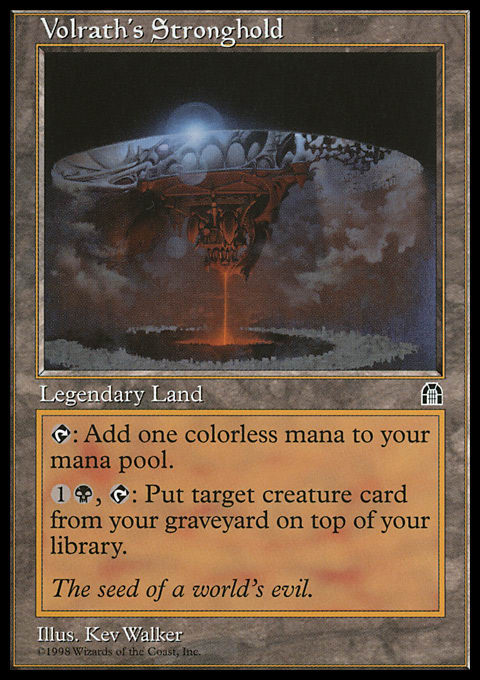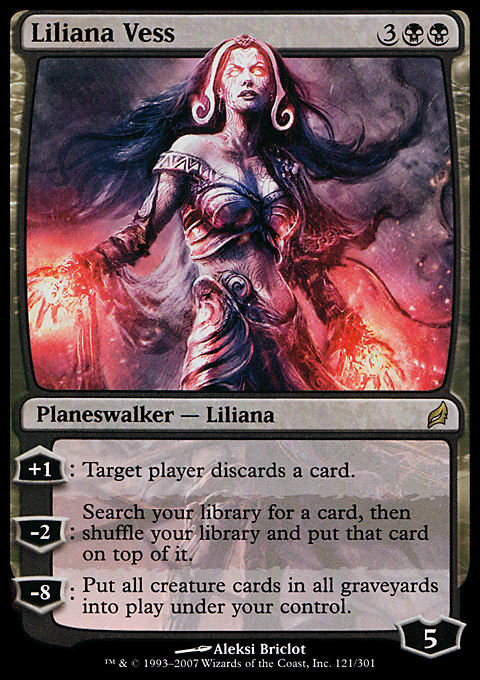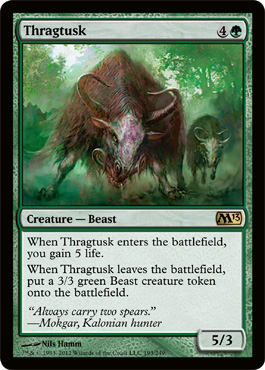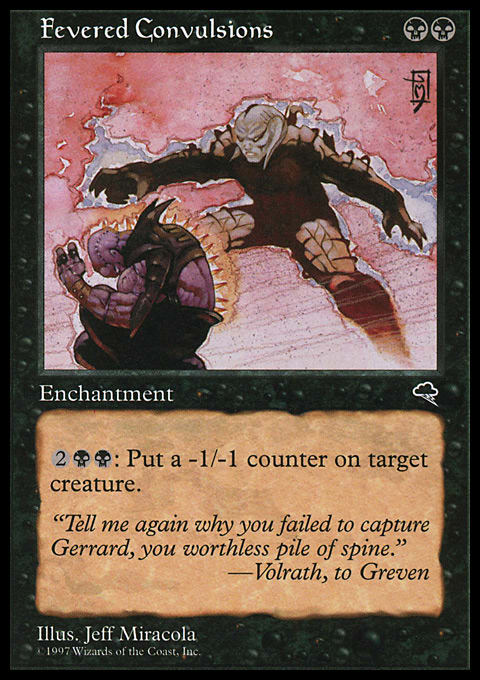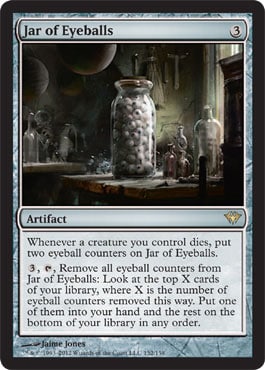Today, I want to talk about cockroaches in Magic. Two and four weeks ago, I started writing about card types in multiplayer. At first, we discussed the power of a rattlesnake card. These are those cards that warn away attacks and removal by threatening retribution. Then, we discussed spider cards—hiding and surprising someone with a bite from beyond, with no warning. Today, we are moving to the next animal type, the cockroach.
Again, these ideas were created years ago, but I feel a refresher is helpful for older players and putting the information out there is nice for new players. So relax and step back, and let’s talk of insects.
The cockroach is famous because it survives. Urban myth states that a cockroach is the only creature to survive a nuclear holocaust. They are all over the map, living in a variety of habitats. Cockroaches survive, and they do their insecty thing. Cockroaches in Magic are similar. They linger on the board, and you can activate them again and again to do their things. Each time you activate one, the power is not amazing, but over time, it builds and builds. Then, you win the game under an avalanche of activations from your cockroaches.
When Anthony Alonghi (a famous multiplayer writer of the old days) created these animal types as ways to evaluate cards, he only included five animals—spider and rattlesnake we looked at, and plankton, pigeon, and gorilla are coming in future articles. That’s it: five ways. However, after a while, he noticed something was missing, and he entered in the insect we know and love.
What Is a Cockroach?
Volrath's Stronghold is an ideal cockroach card. It activates to place a creature on top of your library from your graveyard. You can tap it again and again for this ability, turn after turn after turn. It never gives you card advantage barring something such as Mulldrifter or Etched Oracle, but it makes your draws reliable—and you always draw your best dead creature. The enhanced cad quality that it provides, turn after turn, becomes an avalanche of wealth that buries your foes. It’s a great cockroach card.
To find great cockroach cards, look for permanents that tend to have activations. They don’t always have to have activation costs because a permanent that triggers each upkeep could also be a nice cockroach. These abilities also need to give you a serious advantage. The fact that Advance Scout can be activated for ![]() to give a creature first strike doesn’t mean he’s a nice cockroach.
to give a creature first strike doesn’t mean he’s a nice cockroach.
Some great example of cockroaches include lands such as Maze of Ith, creatures such as Avatar of Woe, artifacts such as Staff of Domination, and enchantments such as Awakening Zone. Each of these gives you power over time as the abilities combine turn after turn after turn.
I think one of the reasons Anthony may have missed the sheer value of the cockroach in his first go around was that we didn’t have banner cards for the game that are blatant examples of the idea. Those are planeswalkers. You activate each one once per main phase, and the activations bowl over creatures and players alike. We’ve learned how powerful ’walkers can be, and good planeswalkers dominate formats while adequate ones see heavy casual play and poor ones still work powerfully in the right deck. Just a simple Liliana Vess forces a discard every turn—and that’s card advantage that adds up. You can also tutor a card to the top of your deck, like a better Volrath's Stronghold activation. These sorts of things add power to the long game, and you want them in your decks.
Note that Maze of Ith was listed in my previous article as a rattlesnake card because it often forces people to attack elsewhere. It sure does, but it’s also a powerful cockroach as well. Imagine how many times in a game it prevented you from losing a creature in a chump-block or from losing life to an unblocked foe. Just this one card, activation after activation, extended your life significantly. That’s a potent cockroach card, and because it rates so highly in both camps—reptile and insect—it tends to be powerful in multiplayer. It’s nasty from two angles, not just one.
Another sort of cockroach is the creature that survives. Take an indestructible creature, for example. It may not obviously be a cockroach. How is Darksteel Sentinel an insect? Well, imagine a mass-removal spell that it lives through. Now that it has survived, how many attacks does it have in it? If you swing four times over the course of the next ten turns, you dealt an additional 12 damage. How many blocks does it have in it? If you block attacks twice in the same amount of time, it soaked up that damage. It has an effect every turn even through removal, so it has a cockroach ability that a simple 3/3 flash vigilance creature would not have.
Similarly, a creature that can regenerate may not be as powerful a cockroach as Darksteel Sentinel, but it’s still able to survive a lot after it would have otherwise died. Another example is the creature that leaves behind friends when it leaves us. Thragtusk is the newest example of this, but we’ve had creatures that die and leave behind one or more creature tokens for a while now. There is a built-in resiliency that allows you to push past one removal spell. See also: persist and undying.
The cheaper the activation cost on a cockroach card, the better the cockroach it is. You have the potential to use it multiple times or even when you are using your mana for other effects. Better cockroaches also have the potential to be used more than once. For example, compare Ant Queen to Throne of Empires. One costs a simple mana to spit out a 1/1, but that taps the artifact. The other requires a full 2 mana, but it is reusable. In multiplayer, if you are playing green, which would you rather have? You’d almost always want the Queen because she’s cheap enough to be used multiple times to spit out a bunch of Insect tokens rather than just once a turn. The Throne is still an interesting and solid cockroach, but the Queen is a true cockroach powerhouse.
How Do I Use a Cockroach?
One of the reasons that cockroaches work so well in multiplayer is that this is a format massively sensitive to card advantage. We’ve talked about it many times before, but as you play three or five opponents, you are naturally being outdrawn three to five times by your foe every single turn. Imagine that you are playing a duel against someone at the card shop. He is playing a five-color Honden deck, and he manages to cast three Hondens, one of which is a Honden of Seeing Winds. As such, every turn, your foe is drawing three extra cards. Your enemy taps some lands and plays a fourth Honden. Well, you can’t let that go through, so you play Cancel and counter it. That’s a good card, right? Then, he plays something else because he can now get past your counter shield. How good does a Murder or Mana Leak look right now?
In a normal duel, trading one card for another is good math. I am trading my draw step for yours, and I’m spending less mana or building my mana base, and so forth. But when being outdrawn naturally, suddenly a Cancel trades my entire draw step for just one of my enemies’ four draw steps. We’ll talk more about this in the pigeon article at length, but we need to make sure everyone understands this for cockroaches as well.
Since you are being constantly outdrawn, having a permanent that can be used again and again is a way of counteracting that effect. I want to demonstrate how an average cockroach can change the game. Imagine you control Fevered Convulsions. This is an enchantment you can activate many times for 4 mana each time, and you’ll put a -1/-1 counter on a creature for each activation. This isn’t exactly a card that will be in the conversation for a hypothetical Top 10 Cockroaches of All Time article. It can’t kill anything of size for a while. Why would I even discuss it? Well, it can finish off a creature that took damage in combat after dropping its defense. You can even do it when one enemy attacks another when you aren’t involved.
You can blast utility creatures from Mother of Runes to Birds of Paradise. You can stack a few on a large creature to defeat it. It’s a way to hamper smaller indestructible creatures, from Stuffy Doll to Darksteel Gargoyle. This minor enchantment just sits on the board until someone sweeps enchantments—no one is going to waste a Naturalize on it unless that player has a deck particularly weak to it. Then, you use it over and over again, as you have mana, and you wind up with a major impact on the board from an average cockroach. Sure, it looks weak when compared to Treasure Trove or Dark Impostor (would you rather pay 6 mana to exile a creature or 4 to put a -1/-1 counter on it?). But it does have an underestimated impact on the board, and you can harness that power.
And if a simple little Fevered Convulsions can have that kind of an impact over an entire game, imagine what you can do with a powerful cockroach.
How Do I Find Good Cockroaches?
When talking about these guys, I’ve given you several places to look: activated or triggered abilities, planeswalkers, and more. Now that you know why a card such as Volrath's Stronghold is so powerful, you can look for other potent cards.
Many cockroaches are too powerful to stay on the board for long. In a deck with few to no enchantments, Tranquil Grove is massively powerful. This is a 2-mana enchantment that can be activated for 3 mana to sweep all other enchantments. This is obviously a strong cockroach because you can activate it to sweep the board of other enchantments again and again, for very little mana. If a foe has an enchantment-heavy deck or a powerful enchantment in his or her hand, that player will blast your Grove off the table. It’s too powerful to have around against him.
Repeatable powerhouses that are going to upset the balance the game in a two- or three-player game are often targeted as well. Planar Portal taps to tutor, and that’s often too potent to keep around if someone has the mana for it. Academy Ruins is nasty when that player has a sacrifice-to-use artifact such as Mindslaver or Memory Jar. Someone will find a Strip Mine or Vindicate and take it out. Staff of Domination was so powerful it was banned in Commander. If you cast one in a non-Commander multiplayer game, someone will rightly smash it to pieces.
While there is a place for a card that calls for an immediate answer, I prefer my cards to have a bit of subtlety to them. I almost never want to have the most powerful creature, land, artifact, or enchantment on the table—then, I’ll lose it when someone plays Decimate, Hull Breach, Acidic Slime, Shriekmaw, or whatever. That’s true of my abilities as well, both activated and triggered. I prefer cards that are a bit less powerful, but still good.
Take Jar of Eyeballs as an example. It loads up with a few counters, and then you tap it and pay 3 mana to remove those counters and Impulse your deck. You draw a card and put the others on the bottom of the deck, and it takes a while to do it again. You might draw four or five cards with it over the game. Of course, those draws are really good, because you dug into your library to find them, so they are high-quality cards. Because it never threatens to explode into card advantage as Citanul Flute and Treasure Trove do, it usually sits back, quietly doing its work and putting you in a place to win. It’s better for me to play Jar of Eyeballs and use it five times for five cards than it is to play Mind's Eye and have it immediately destroyed. One nets me cards, and the other was card disadvantage (remember that one-on-one trades are usually bad in terms of card advantage, no matter which side of the trade you are on).
There are a lot of these subtle cards that you can keep around for a while and yield serious power from. Take a look at your collection and traders—I bet that you have some good dudes sticking around, so take another look through your cards for what is good in light of the cockroach effect and see what you might have already to harness.
How Do Cockroaches Interact with Rattlesnakes and Spiders?
Virtually by definition, a cockroach has to be a permanent, but a spell with buyback would certainly qualify since you can play it over and over again for a nice effect. Therefore, spiders just don’t intersect very often with cockroaches. The whole point of a cockroach is for it to be underfoot and seen but not destroyed or too obviously powerful, and a spider’s whole point is to come out of nowhere and take out something. There are very few cards that are good spiders and good cockroaches.
On the other hand, rattlesnakes and cockroaches can be great friends. I’ve already mentioned rattlesnakes such as Maze of Ith that keep you alive and how that card is so good precisely because it scores highly as both a cockroach and rattlesnake. A creature that will survive blocking a giant creature because it has cockroach properties—such as Manor Gargoyle—will also often act as a rattlesnake since the attacker goes elsewhere to hit another player.
Creatures with powerful tap abilities that send attackers elsewhere are also often keen cockroaches. Are you attacking the foe with an untapped Visara the Dreadful in play? Do you want to run into that, or will you instead attack somewhere else and hope that Visara won’t look your way? From Royal Assassin to Sorceress Queen to Icy Manipulator, a lot of classic and powerful defenses are both cockroaches—due to their repeatability—and rattlesnakes.
Now, let’s not get crazy. A lot of rattlesnakes are not cockroaches and vice versa. Even rattlesnakes with activated abilities are not always cockroaches. Take Seal of Doom. You can only sacrifice it once to blast an attacker or another creature, and then it’s gone. Similarly, cards with fuel such as Avenger en-Dal or Spike Weaver are not cockroaches because they have a limited amount of times they can go off, and people sometimes swing into to force you to burn the costs.
Many of the creatures that keep you safe—but not through use of abilities—are also not cockroaches. A Vampire Nighthawk that keeps back a Serra Avatar and forces it to go elsewhere is certainly not a cockroach. There is a potent intersection of these two train lines, but don’t think too much of it. Just understand that the potential is there.
I expect to hit the other three types of cards in future articles. If you have a powerful multiplayer card that isn’t a nasty cockroach, spider, or rattlesnake, and you wonder where it fits, wait, and you’ll see the other half of the animals. What’s your favorite cockroach in Commander?
See you next week,
Abe Sargent
















